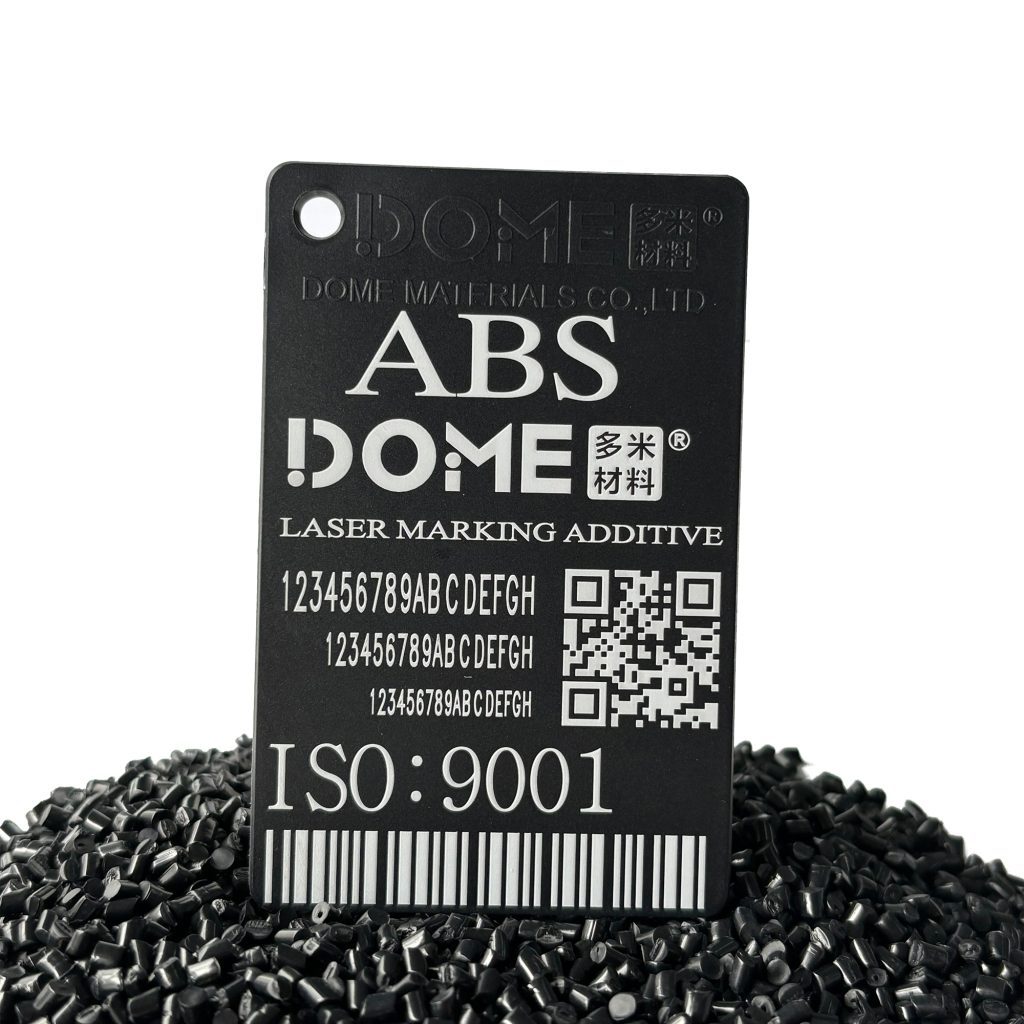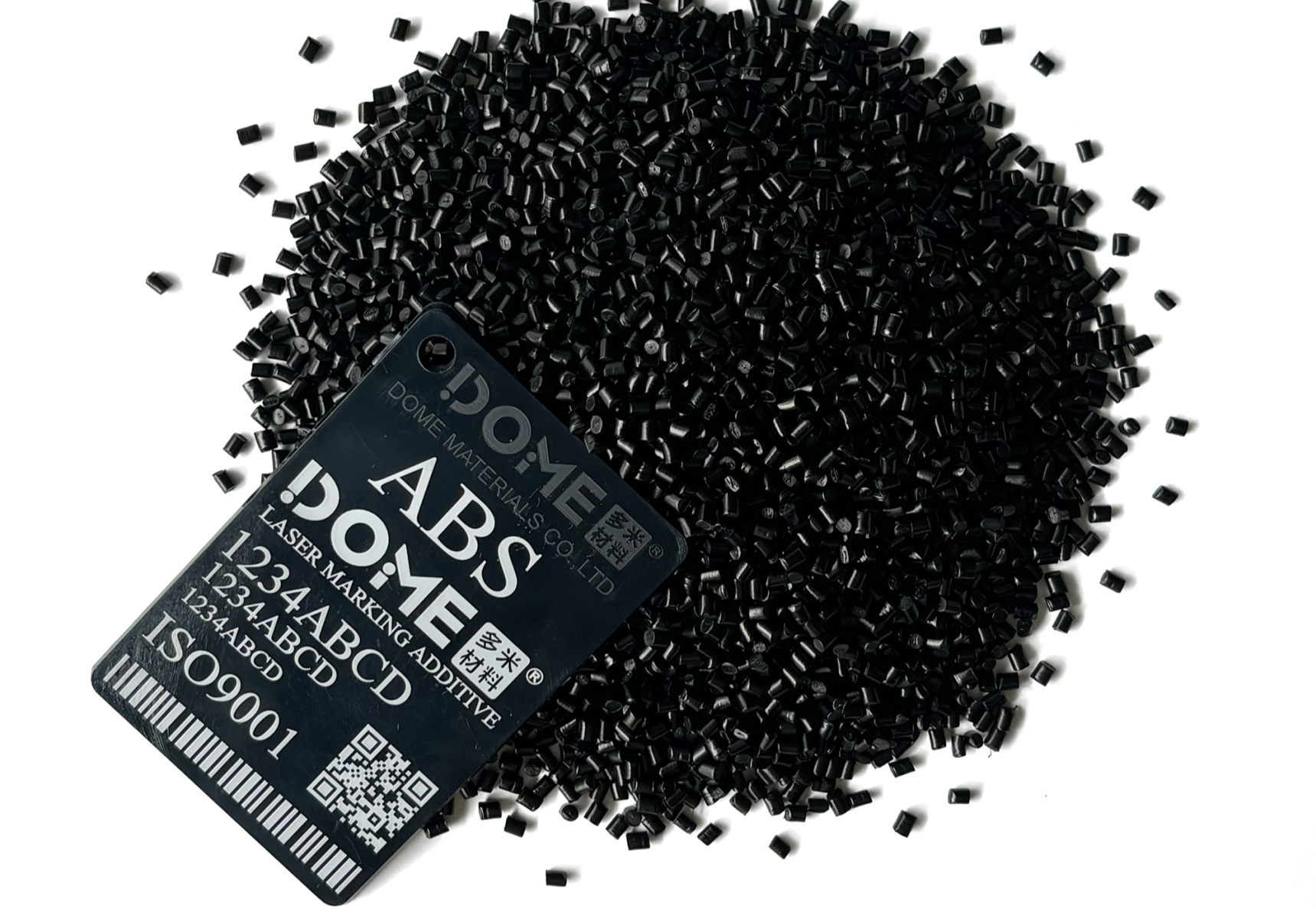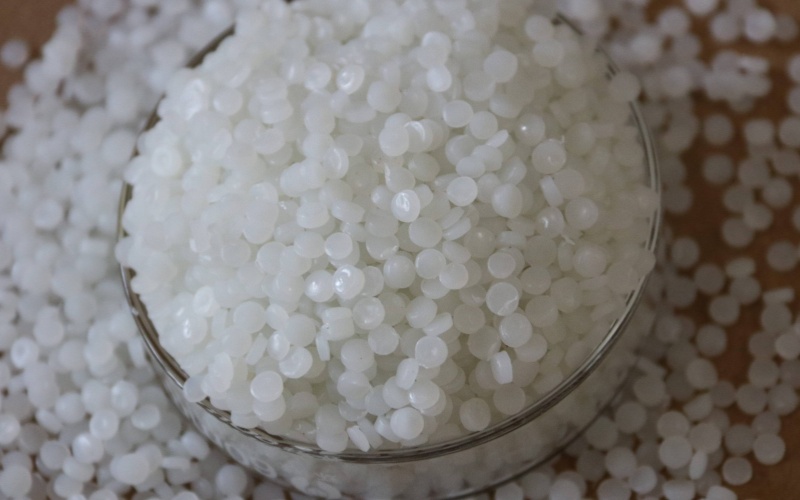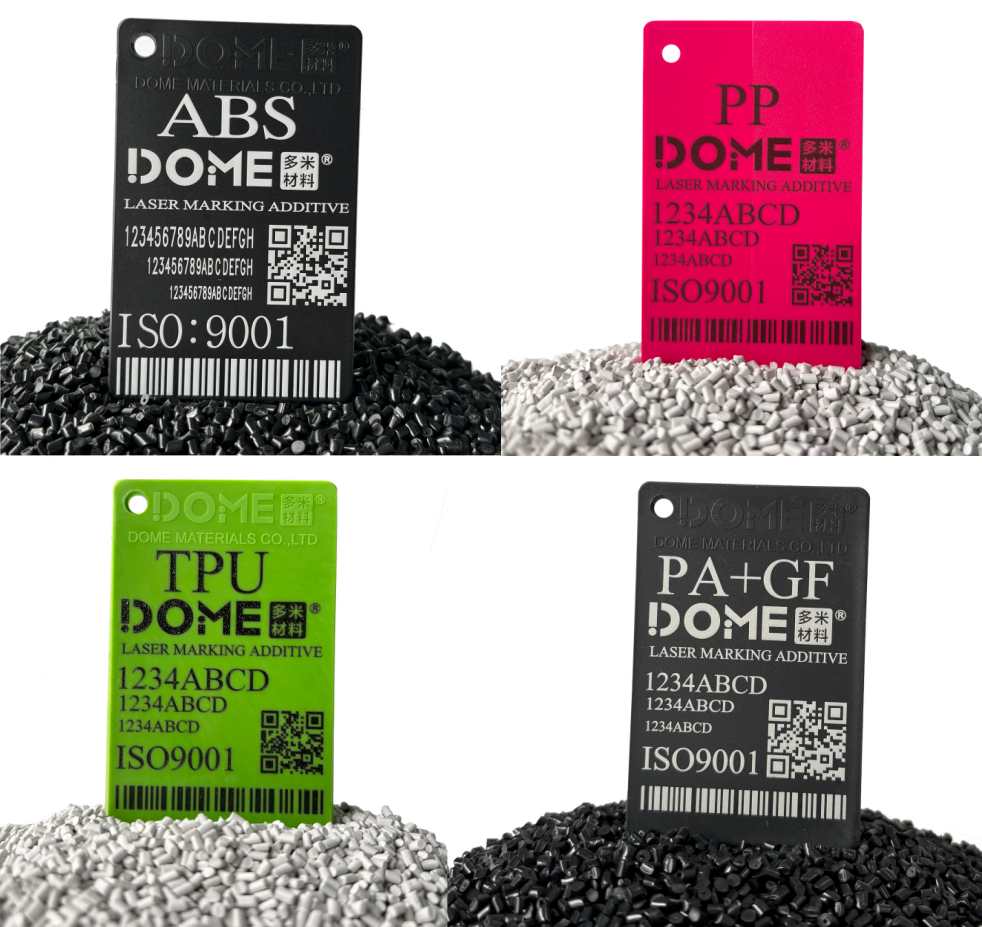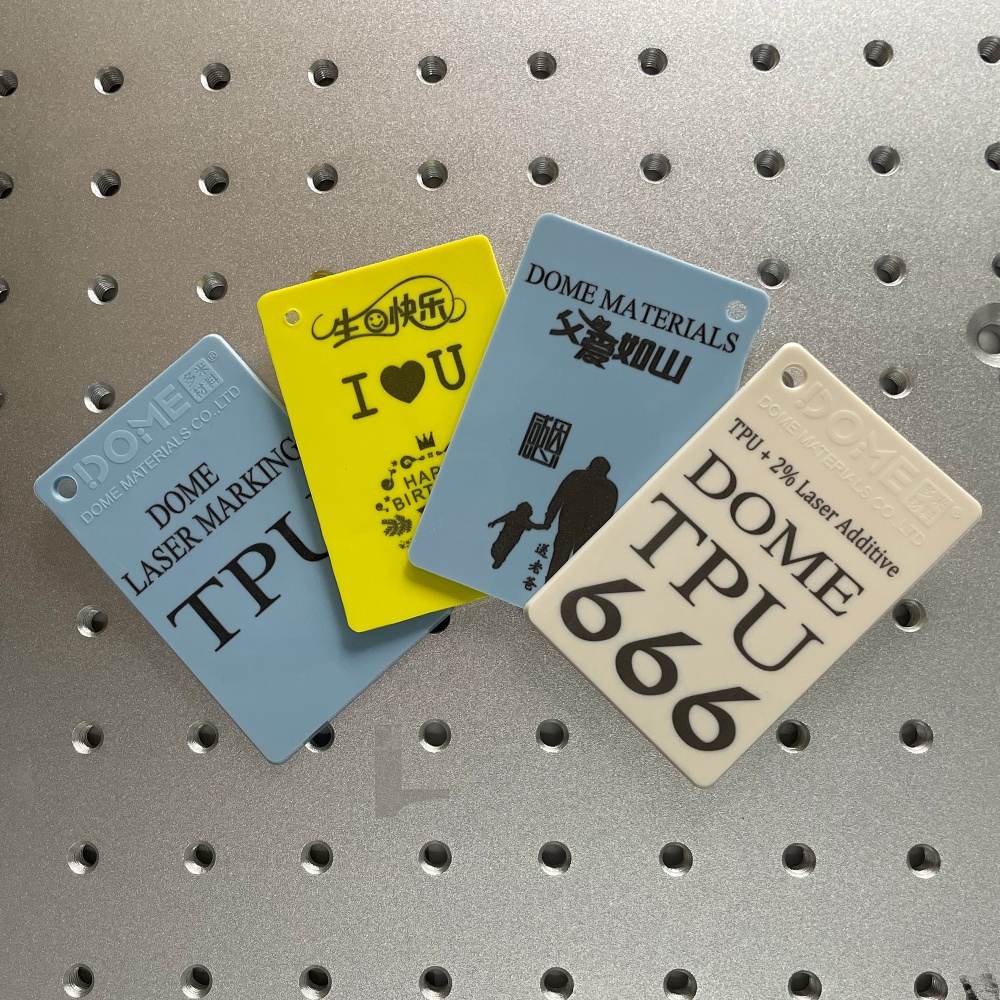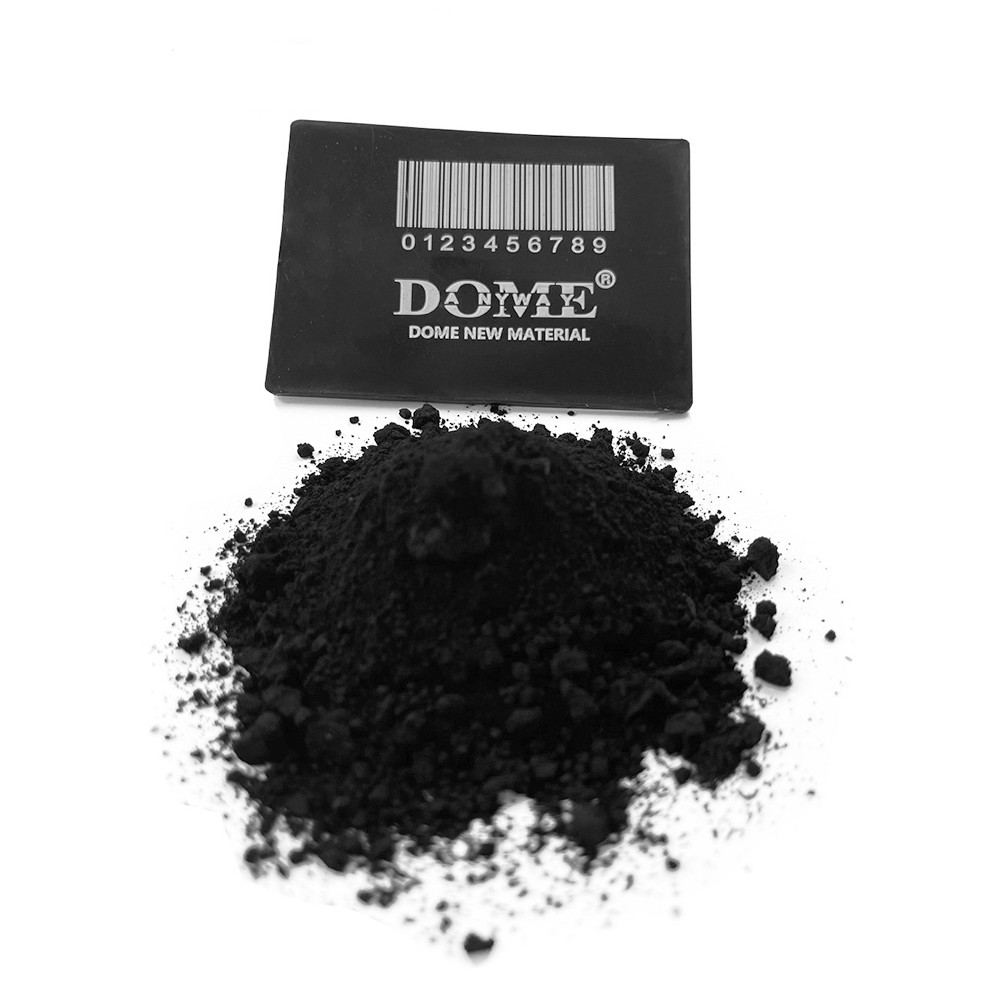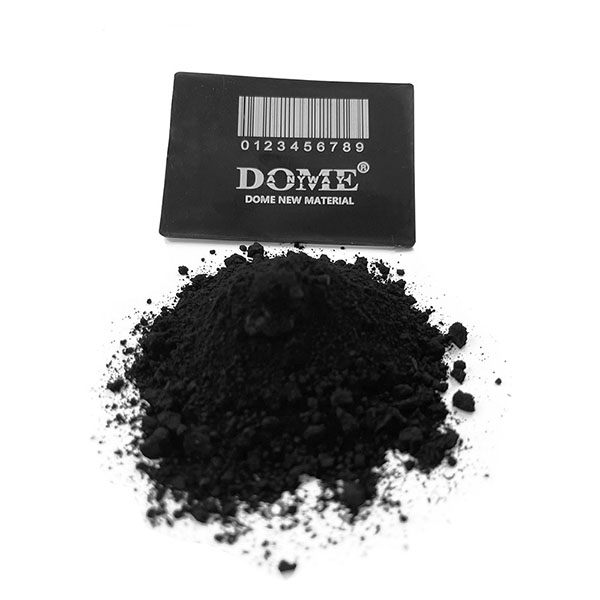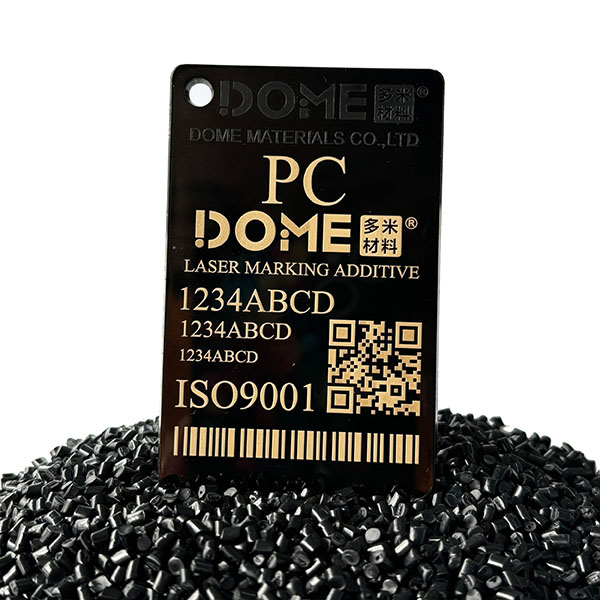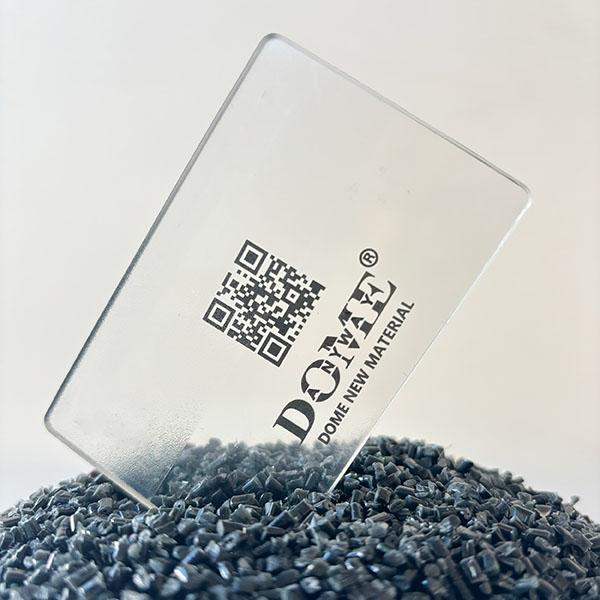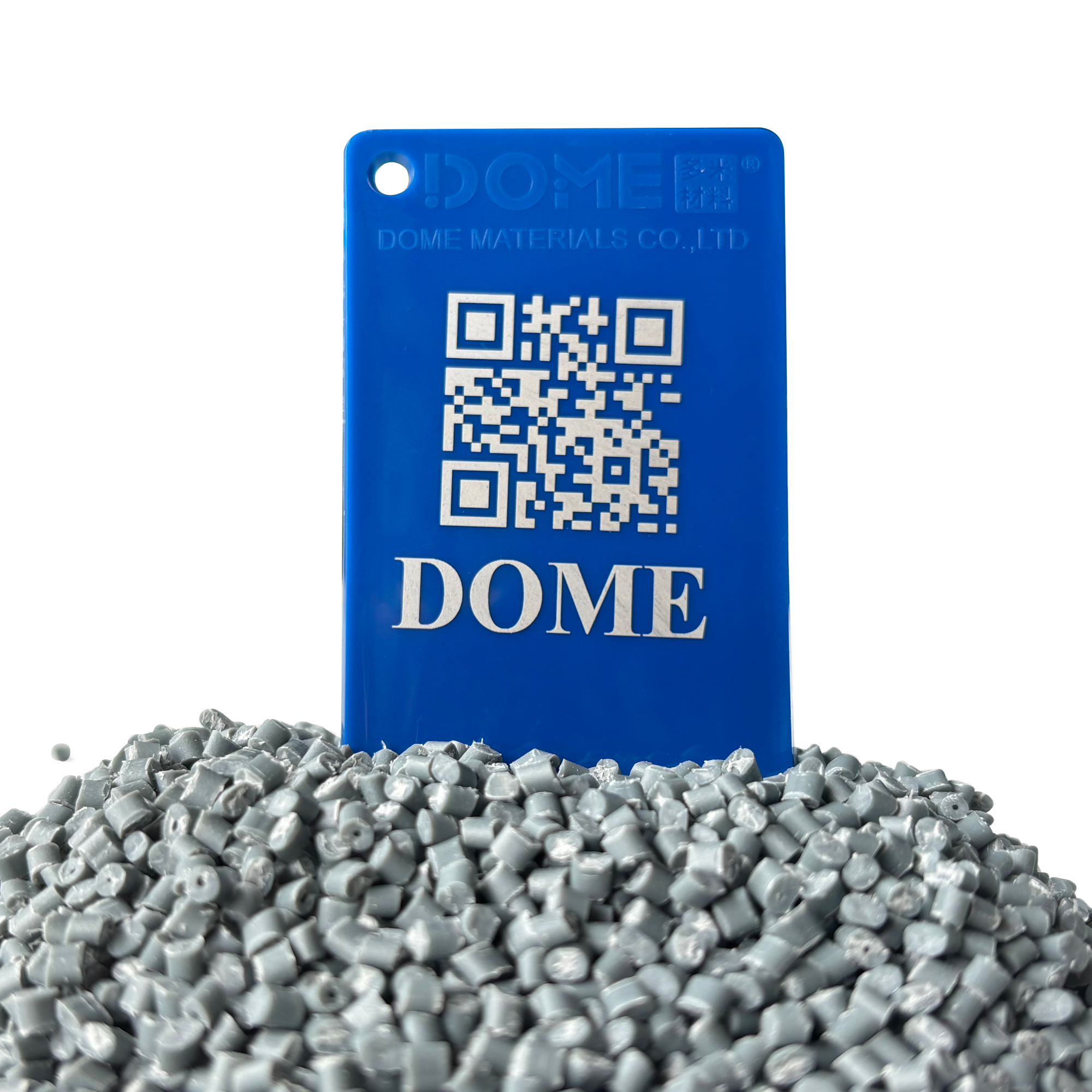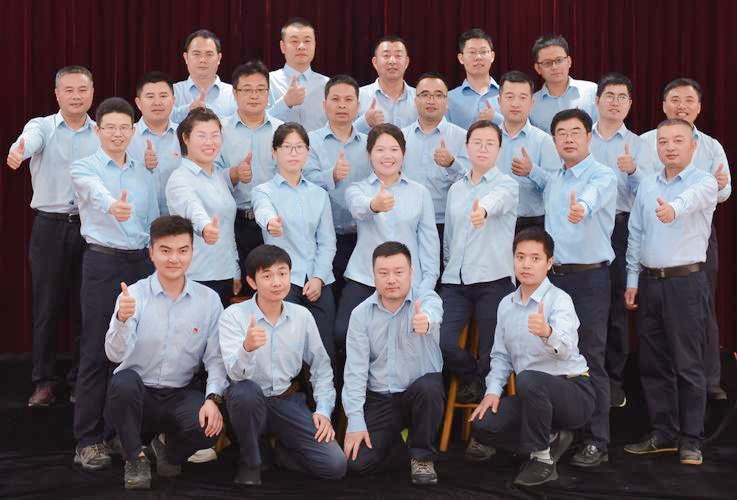In recent years, the advent of plastic laser marking additives has introduced a transformative shift in manufacturing and product identification processes.
These specialized laser additives are incorporated into plastic materials to enhance their contrast to laser marking, allowing for the precise and permanent inscription of logos, barcodes, serial numbers, and other critical identifiers.
The importance of these laser marking additives lies not only in their capacity to produce high-contrast, durable marks without compromising material integrity but also in their contribution to cost-efficiency and environmental sustainability. By facilitating non-contact marking, they minimize waste and the need for additional consumables, offering a cleaner alternative to traditional labeling techniques.
Consequently, plastic laser marking additives are becoming indispensable across diverse industries, from automotive and electronics to medical devices and consumer goods, underscoring their pivotal role in advancing modern manufacturing standards and traceability.

The Art of Plastic Laser Marking: Understanding the Fundamental Principles
In the realm of modern manufacturing, the versatility of plastic laser marking has emerged as a pivotal technology, enabling efficient and precise identification, decoration, and information encoding on a wide array of plastic components. This essay aims to delve into the core principles underlying this innovative technique, exploring the intricate processes of carbonization, foaming, ablation, and self-discoloration with additives.
Carbonization, the first principle, occurs when the focused laser beam interacts with the surface of the plastic material, causing a localized heating and subsequent decomposition of the polymer structure. This thermal reaction results in the formation of a dark, carbon-rich marking, which stands in contrast to the surrounding unaffected surface, creating a visually striking and durable impression.
The second principle, foaming, arises from the rapid heating and subsequent expansion of the plastic material under the laser’s intense energy. As the polymer molecules rapidly expand, they create a raised, three-dimensional effect on the surface, adding a tactile element to the marking and enhancing its visual appeal.
Ablation, the third principle, involves the selective removal of material from the plastic surface. The laser’s energy is precisely controlled to vaporize and expel a thin layer of the polymer, revealing an underlying contrasting layer or base material, thereby generating a highly legible and long-lasting marking.
Finally, the fourth principle, self-discoloration with additives, leverages the strategic incorporation of specialized pigments or dyes into the plastic formulation. When the laser interacts with these additives, the material undergoes a localized color change, producing a visually striking and customizable marking without the need for additional surface treatments.
The harmonious interplay of these principles, coupled with the precision and control afforded by laser technology, has elevated plastic laser marking as a sought-after solution in a diverse range of industries, from automotive and electronics to consumer goods and medical devices. By understanding the fundamental mechanisms underlying this innovative technique, manufacturers can harness its full potential, unlocking new avenues for product identification, branding, and information management.
Unveiling the Need for Laser Marking Additives
Laser marking produces lasting and indestructible impressions on plastic surfaces, offering benefits like improved quality assurance, protection of brands from counterfeiting, and resilience against environmental elements.
Moreover, laser marking is a highly versatile technology, ideal for high-volume products and small batch sizes. The laser marks, resistant to abrasion, can be applied to soft or hard surfaces, including non-flat surfaces. Marking in three dimensions is achievable.
However, not all polymers are marked the same way. Some polymers such as PE or PP are nearly transparent to the commonly used near-infrared lasers operating at a wavelength of around 1064 nm. Therefore, laser marking additives are essential in numerous polymers to ensure a successful laser marking outcome.
Laser marking additives have emerged as a pivotal component in the realm of modern manufacturing. These specialized compounds, when integrated into materials, facilitate the creation of high-quality, long-lasting markings that are resistant to environmental factors and ensure the traceability of critical components. As industries increasingly prioritize product identification, quality control, and compliance, the demand for reliable laser marking solutions has become paramount. The strategic incorporation of laser marking additives empowers manufacturers to unlock new levels of precision, efficiency, and cost-effectiveness, ultimately contributing to the overall competitiveness and sustainability of their operations.
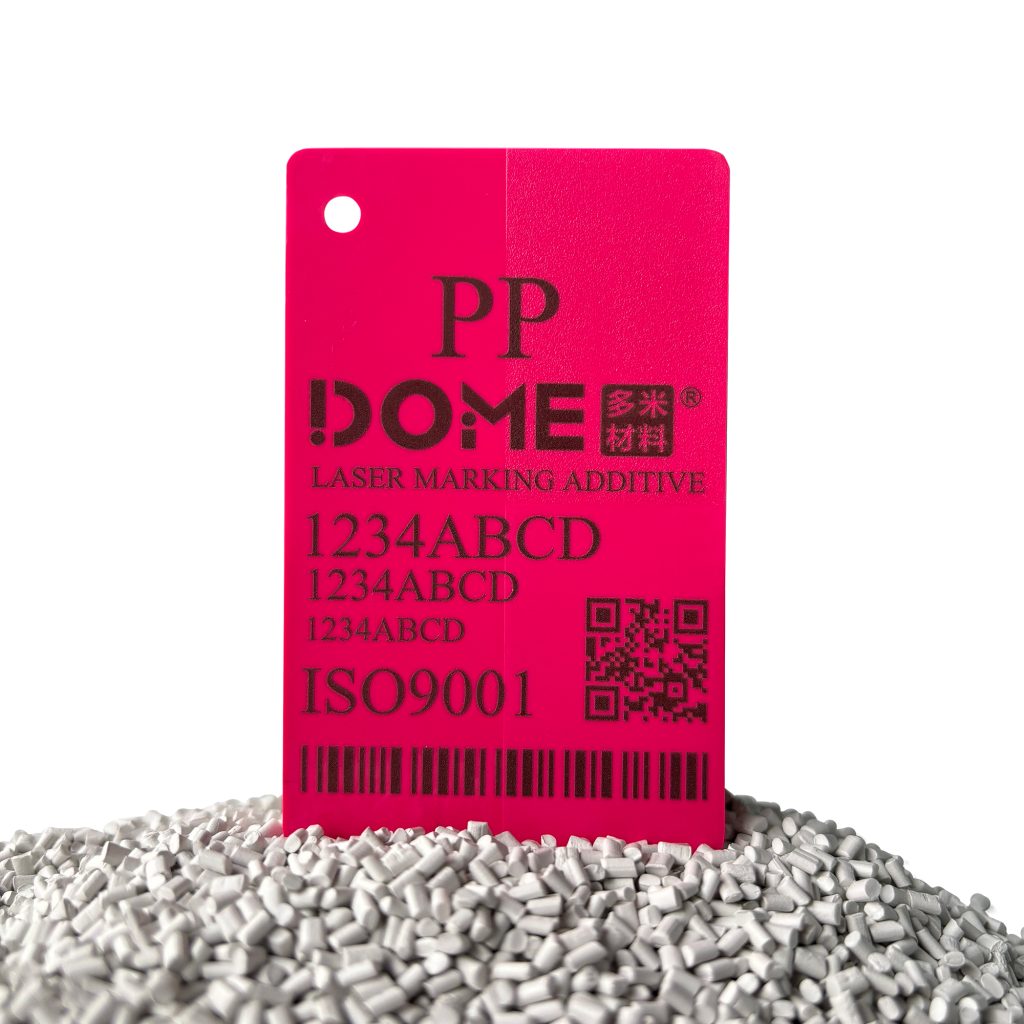
Compatibility with Plastics – Laser Marking Additives Suitable for Various Types of Plastics
The compatibility of laser marking additives with various plastics is a crucial consideration in the selection of appropriate materials for industrial applications.
Laser marking additives can be used in polyolefins like PP, HDPE, PS, PA66, ABS, PC, TPU, PET, PBT, POM, Nylon, PVC, TPE, etc. These specialty compounds can deliver an excellent mark for both transparent and non-transparent plastics.
These laser additives, when incorporated into plastic formulations, enable efficient and precise laser marking, a process that is integral to product identification, traceability, and branding. By carefully evaluating the performance of laser marking additives across a range of plastic types, manufacturers can ensure the reliable and consistent marking of their products, ultimately enhancing quality control and meeting industry standards.
Wide Application of Laser Marking Additives in Thermoplastics
Laser marking additives have found wide application in the realm of thermoplastics, significantly enhancing the precision and efficiency of material identification and customization processes. These additives, integrated into the polymer matrix, interact with laser beams to create high-contrast, durable marks without damaging the substrate. This technology is increasingly adopted across various industries, including automotive, electronics, and medical devices, due to its versatility, speed, and minimal environmental impact.
The most common applications include plastic security seals and labels, animal ear tags, cables & wires, electronic product housings, etc.
By enabling detailed and permanent markings, laser marking additives contribute to improved traceability, regulatory compliance, and aesthetic quality, thereby elevating thermoplastic products’ overall value and functional capabilities.
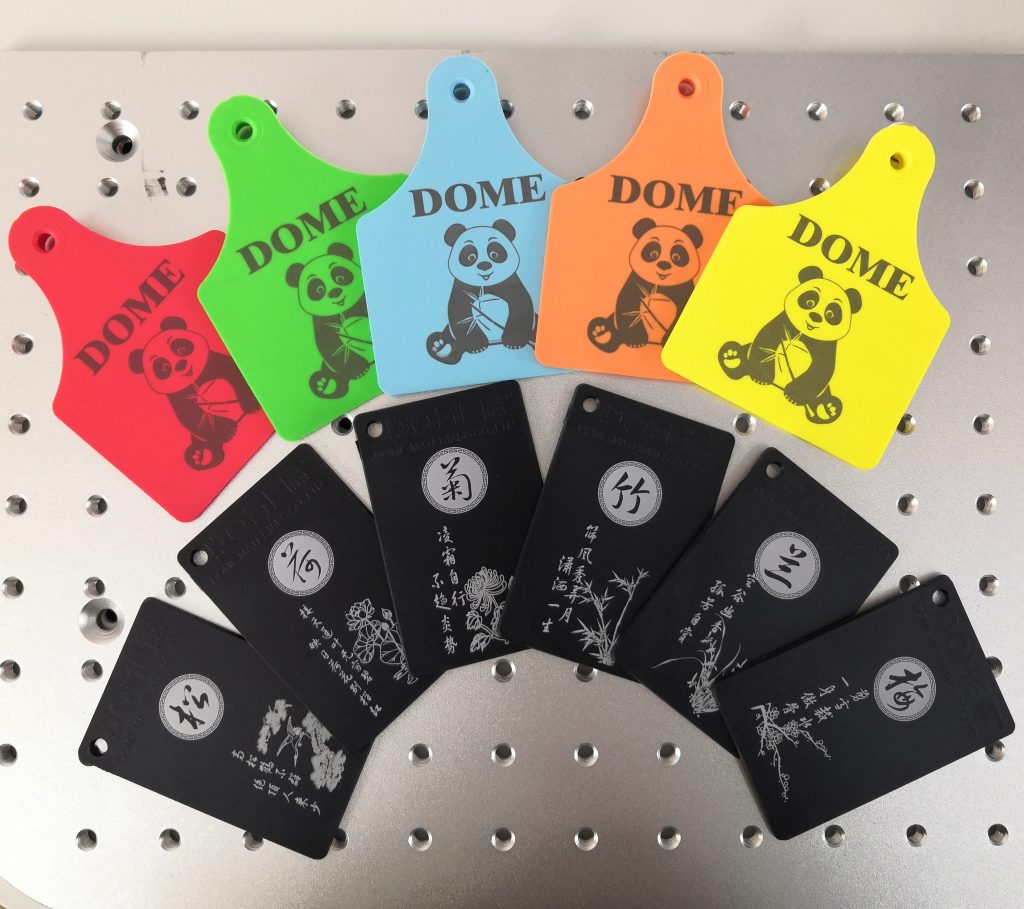
Selecting the Right Laser Marking Additive for Your Application
Laser marking additives play a crucial role in achieving the desired results in laser marking applications. With a wide range of additives available in the market, selecting the right one for your specific application is essential for ensuring optimal performance.
When choosing a laser marking additive, it is important to consider several factors such as the material to be marked, the desired marking effect, and the laser system being used. Different additives have different properties and functionalities, so it is important to carefully evaluate your requirements before making a decision.
For example, if you are marking white on black ABS products, you may need a special carbon black-containing laser marking additive that provides good contrast and adhesion to the surface. On the other hand, if you are marking black on colored PP or TPU, you may need an antimony-containing laser marking additive that offers high contrast and durability against wear and tear.
Additionally, it is important to consider the compatibility of the additive with the laser system you are using. Some additives may work better with certain types of lasers, for example, if you need laser marking white on colored polymer, you need a UV laser. so it is important to consult with the manufacturer or supplier to ensure compatibility.
In conclusion, selecting the right laser marking additive for your application is crucial for achieving the desired results. By considering factors such as material, marking effect, and compatibility with the laser system, you can ensure that you choose the additive that meets your specific requirements and delivers optimal performance.
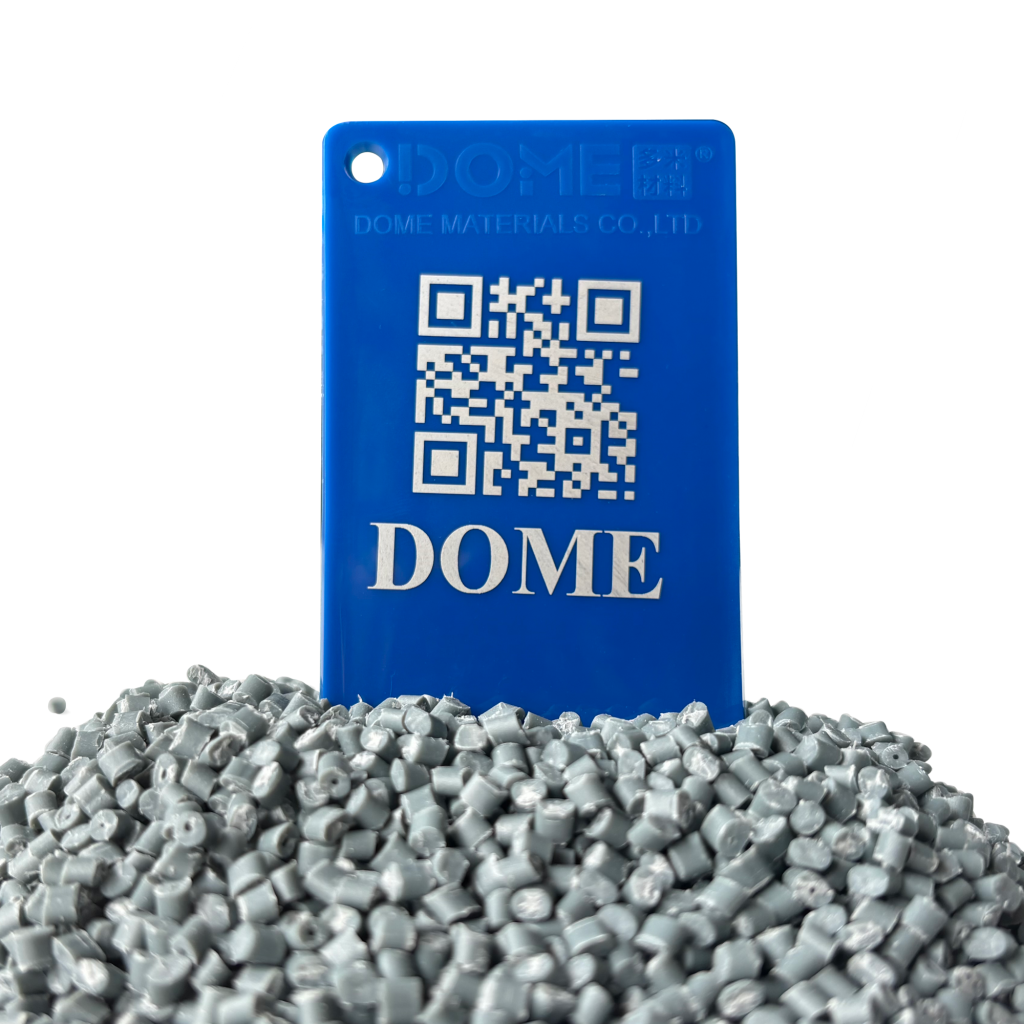
The Main Factors Affecting the Laser Marking Effect on Plastics.
Laser marking on plastics is a process that involves several important factors that can affect the final result. These factors include the raw materials used, the type of laser marking machine, and the technical parameters settings of the laser.
The first factor that greatly influences the laser marking effect on plastics is the choice of raw materials. Different types of plastics have varying compositions and properties, which can react differently to the laser marking process. It is important to select the appropriate type of plastic that is compatible with laser marking to achieve the desired result.
The second factor is the type of laser marking machine used. Different machines offer different levels of power, precision, and flexibility in terms of marking on plastics. The quality of the laser machine plays a crucial role in determining the final marking effect on plastics.
Lastly, the technical parameter settings of the laser also play a significant role in the marking effect. Parameters such as laser power, marking speed, focal length, and frequency need to be adjusted correctly to ensure optimal results. Proper calibration of these parameters is essential to achieve high-quality and consistent laser markings on plastics.
Why Opt for DOME® Laser Marking Additives?
When it comes to laser marking additives for plastics, DOME® Materials stands out as a top choice. Specializing in the manufacturing of laser marking additives over 16 years, DOME® Materials offers total solutions for plastic laser marking.
As a professional laser additives and masterbatches manufacturer, DOME® Materials not only provides high-quality additives but also values customer service. They offer free samples, fast delivery, and exceptional support to meet the needs of their clients.
Choosing DOME® Materials means choosing a reliable partner for all your laser marking additive needs. Trust in their expertise and commitment to excellence for superior results in your plastic marking applications.
In conclusion, the integration of plastic laser marking additives has proven to have a significant impact on the manufacturing industry. These additives provide a permanent, high-quality solution for marking plastic products, offering increased durability and longevity. In addition, they enhance traceability and branding capabilities, ultimately improving product identification and authentication. Overall, the benefits of using plastic laser marking additives include increased efficiency, cost-effectiveness, and environmental sustainability. Enhance your plastic laser marking with DOME® laser additives. Reach out today to optimize your laser marking process!
